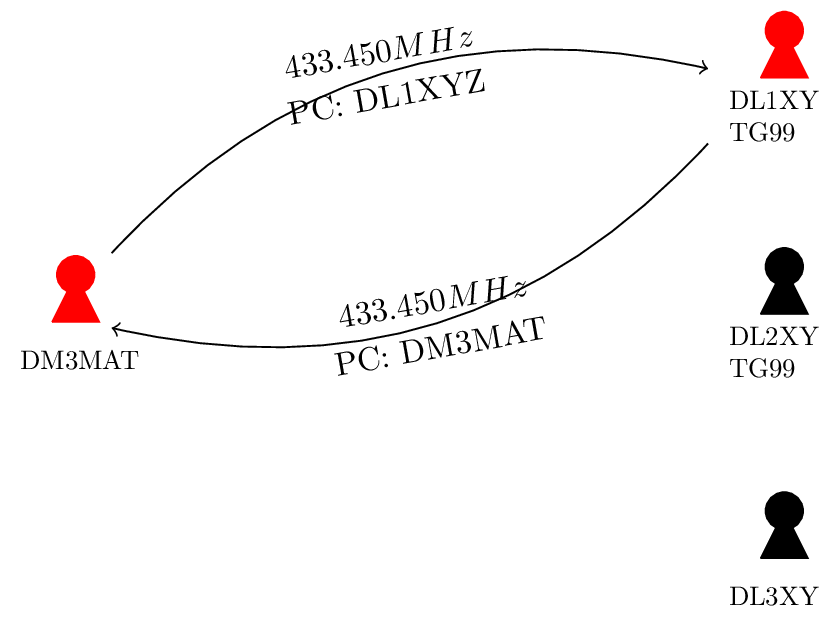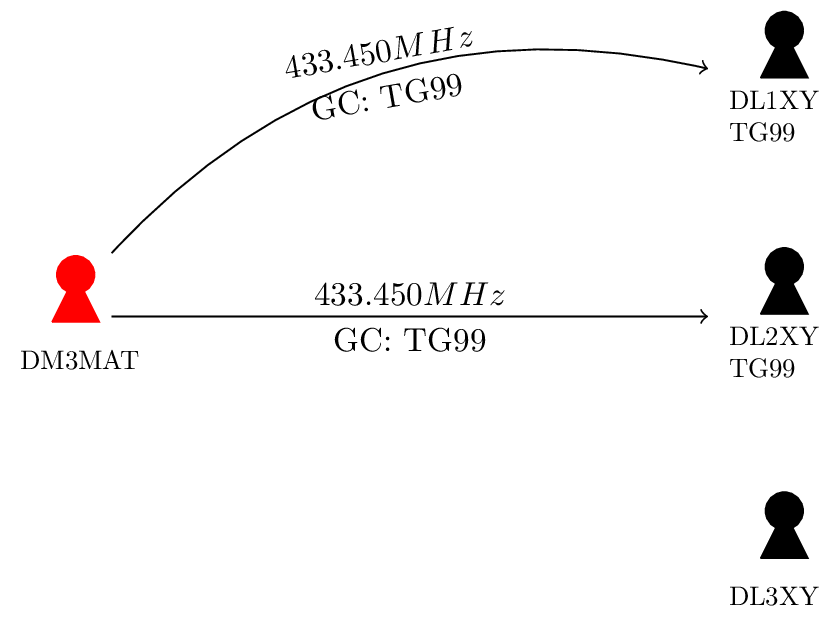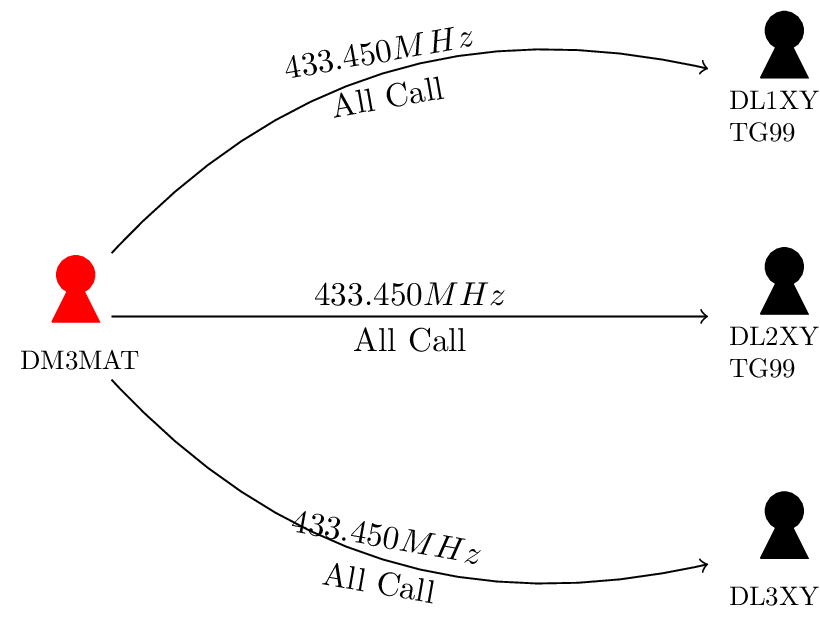The most simple form of a DMR QSO[4] is the simplex QSO. That is a direct connection between two two DMR radios. Like for the DMR repeater operations, this could be a private, group or so-called All Call.
In Example 1.7, “Simplex private call.” a simple simplex private call from DM3MAT to DL1XYZ is shown as well its reply. Both operators transmit and receive on the same frequency (here the DMR calling channel at 433.450 MHz). Although other operators are in the area (DL2XYZ & DL3XYZ) which receive the signal, their radios remain silent. This is because this is a private call to a specific operator and only the radio of that operator will receive the call. All other radios will ignore the call. The channel, however, remains occupied during that call.
At that point it is worth mentioning, that if DL1XYZ answers directly to the initial call by pressing the PTT, he will answer with a private call to DM3MAT. He does not need to search for number of DM3MAT in his address book. The direct answering to calls is only possible for several seconds after the end of the initial call. After that period (called Hang Time) a press on the PTT will start a call to the default contact (see the section called “Creating channels”) associated with the simplex channel.
It is not only possible to call single operators in simplex mode. Also groups can be called using group calls. A common talk group for the simplex mode has the number 99, (TG99, for “talk group 99”). These group calls are then received by all radios that are configured accordingly. Like for the repeater operation, also in simplex mode, the radio needs to know which groups the operator belongs to and therefore, which talk groups to receive on which channels. This is done using so-called Group Lists, which are discussed later.
In Example 1.8, “Simplex group call” such a simplex group call is shown. There DM3MAT calls the talk group TG99. As DL1XYZ as well as DL2XYZ configured their radios to receive that call on simplex channels, they do so. DL3XZY did not, so he does not receive the call. DL1XYZ & DL2XYZ can now respond to that call by pressing on the PTT within the hang time irrespective of their default contact for the channel.
To be sure that a simplex call gets received by all operators in the area, a so-called All Call should be used. This is a special call type to the reserved number 16777215, that gets received by all radios irrespective of their configuration. For the Example 1.9, “Simplex all call”, the all call by DM3MAT gets received by all operators including DL3XYZ. By directly answering within the hang time, all participants are able to respond to that call with an all call as well.
Note
In short: A DMR channel consists of a transmit and receive frequency (identical on simplex channels), a default contact that gets called whenever the PTT button is pressed and a list of group calls the radio will receive on that channel.
Table 1.1. DMR simplex frequencies
| Name | Frequency | Name | Frequency |
| S0 (call) | 433.4500 MHz | S4 | 433.6500 MHz |
| S1 | 433.6125 MHz | S5 | 433.6625 MHz |
| S2 | 433.6250 MHz | S6 | 433.6750 MHz |
| S3 | 433.6375 MHz | S7 | 433.6875 MHz |
Table 1.1, “DMR simplex frequencies” lists the common simplex channel frequencies. The channel S0 is the calling channel. Especially in densely populated areas, you should switch to another channel for the actual QSO and use S0 only for the initial call.


